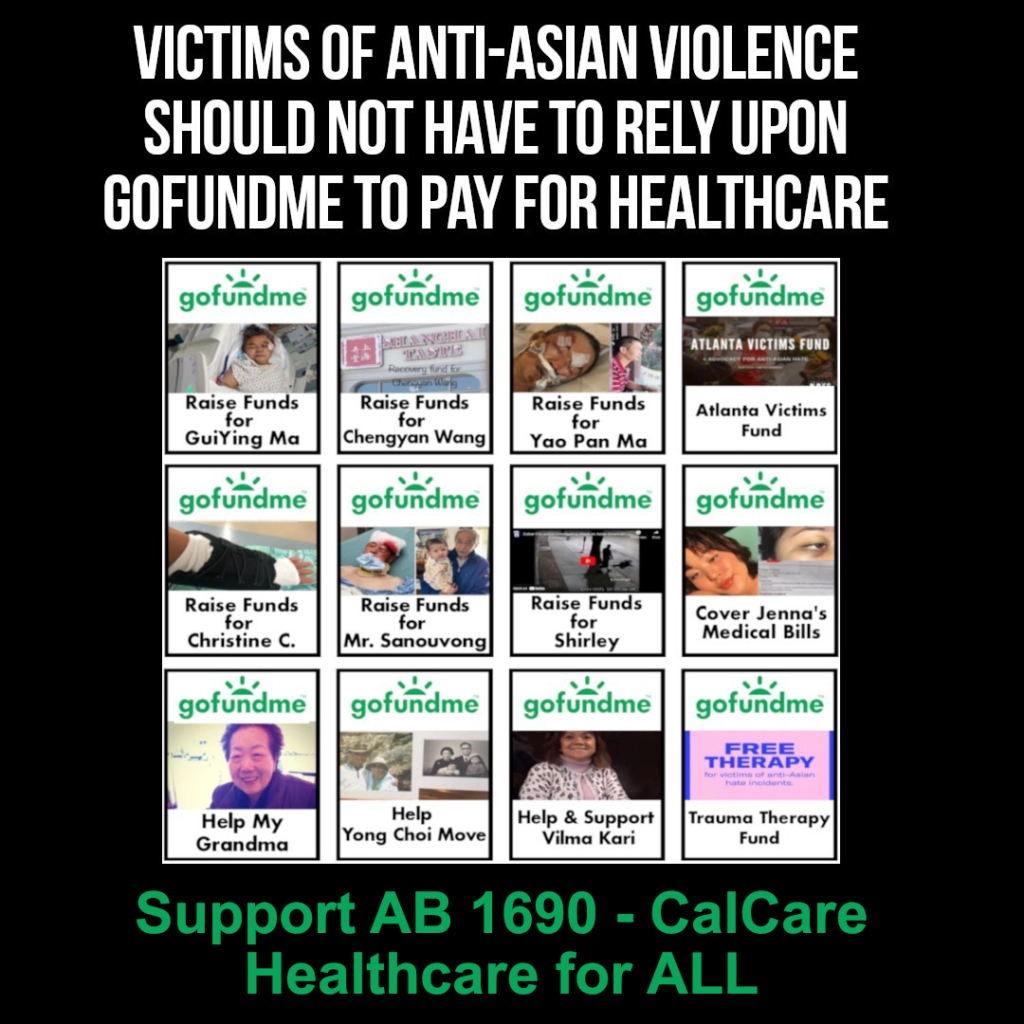What is a healthcare disparity?
A disparity is a difference in treatment or outcome. For example, API, and other people of color, are experiencing above-average rates of Type 2 Diabetes. This is a disparity of healthcare outcome, and also condition.
Due to historic and current oppression different groups often lead different lives, have different average incomes, and experiences different traumas and stressors.
These differences aren’t only grouped by race, but gender, economic status, immigration status, or other possible categorizations.
How does CalCare address disparity?
CalCare establishes the Office of Health Equity. From the AB2200 text:
Article 2. Health Equity
100665. (a) There is hereby established, within CalCare, the Office of Health Equity. The Director of the Department of Health Care Access and Information shall be the director of the office and shall carry out all functions of that position, including enforcement.
The OHE is under the Department of Health Care Access and Information. In some ways, it’s a data-analysis office, that will find disparities, and turn them into policy changes.
What is the difference between equality and equity?
Equality typically means that, statistically, two groups will have equal measurements.
Equity approaches at “equality” critically, and seeks “justice”. For the purposes of this description, you can think of “justice” and “true equality”.
For example, imagine if a population of men, and a population of women, use the healthcare system the same number of times per year. This is “equal”, but because women have more health conditions that will require doctor or hospital visits (like pregnancy, abortion, UTIs, PCOS), it’s not “equity”.
Furthermore, historically, medical care and medical research was focused on treating men (and mainly white men), so this specific disparity created a kind of injustice. This was so obvious, that, in the 1960s, the concept of “women’s health” was developed, and fought for, to address that disparity.
For justice, or something approaching true equality, we do different things, like expect women to use healthcare systems more, establish Women’s Health clinics within healthcare systems, recruit more women into healthcare positions, particularly physicians and administrators. The list goes on.
Some API-related disparities
The Asian American “Model Minority Myth” makes invisible, many of the problems API people suffer. Health disparities are no different, so we often don’t know our health risk and problems.
Another form of stereotype, the “Eastern Medicine” trope, is that there are Eastern forms of healthcare that are more natural, and superior, to Western medicine: Ayuvedic medicine, Traditional Chinese Medicine, veganism, macrobiotics. While these practices can be healthy, there’s a lot of racial idealization and mystification that makes it seem, to non-Asians, like Asian people have natural good health. Again, this makes API health problems invisible.
Here are a list of common stereotypes, and actual health disparities. Links go to sources:
| Trope/Stereotype | Fact |
|---|---|
| Asians don’t get fat. | Obesity rate: 23.3%, higher for Japanese and Filipino |
| Asians eat fish, and that’s good for heart health. | We eat the fish salty. Hypertension risk is lower than average, but still 84% |
| We eat a lot and don’t get fat. | API Women have a 25.1% rate of eating disorders |
| We have herbs that cure everything. | We often lack regular health insurance, more than other groups. |
| We don’t speak English. | Many of us don’t speak English! So we need interpreters and translated materials. |
Some “conditions of living” that API people experience, lead people to using the healthcare system. For example, if urban API people get beat up in a hate incident, their injuries may send them to the hospital (or morgue).

Some API people, mainly refugees and immigrants, have trauma from war, or postwar poverty.
- The US had wars in the Philippines, Japan, Korea, Vietnam, Laos, Hawaii, and the Pacific Islands.
- Taiwan was under martial law until 1987.
- People of South Asia were colonized by European countries, and suffered wars, genocide, and inter-ethnic violence.
- People of the Middle East have, obviously, been suffering war and conflict for decades, with the US, and with other powers.
These traumas may require mental health services, which are often not available.

Will CalCare direct money to address disparities?
Yes. CalCare establishes a Special Projects Budget that includes capital investment in underserved communities.
CalCare will consolidate smaller populations, like API groups, into a single system, making it more feasible to serve these diverse populations. Under the current, profit-driven system, API people are often treated like white people – that’s to say, disparities are ignored – because small populations aren’t profitable.
(Consider how often you see supermarkets for Chinese, Korean, Filipino, or Japanese people, and how infrequently you see them for Burmese, Laotian, Thai, or Mongolian people. Small customer bases get ignored, or served under the umbrella of another group.)
What minority protections does CalCare have?
Non-discrimination is a requirement for all service providers under CalCare. All residents of this state, no matter what their sex, race, color, religion, ancestry, national origin, disability, age, previous or existing medical condition, genetic information, marital status, familial status, military or veteran status, sexual orientation, gender identity or expression, pregnancy, pregnancy-related medical condition, including termination of pregnancy, citizenship, primary language, or immigration status, are entitled to full and equal accommodations, advantages, facilities, privileges, or services in all health care providers participating in CalCare.
